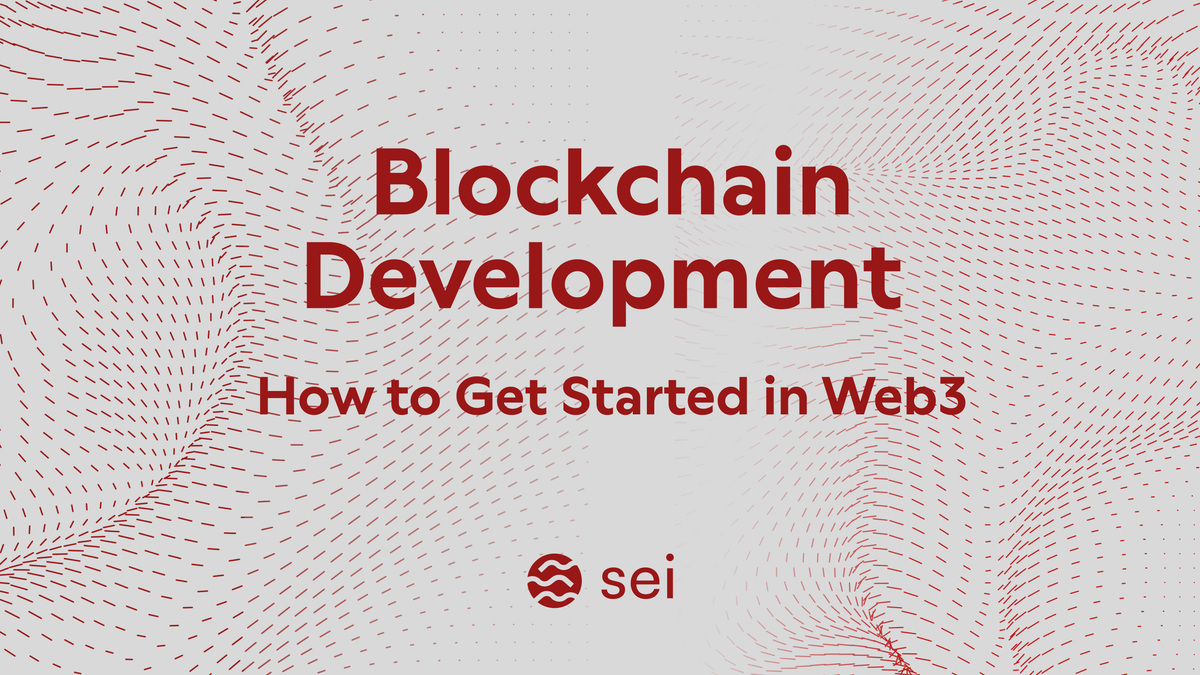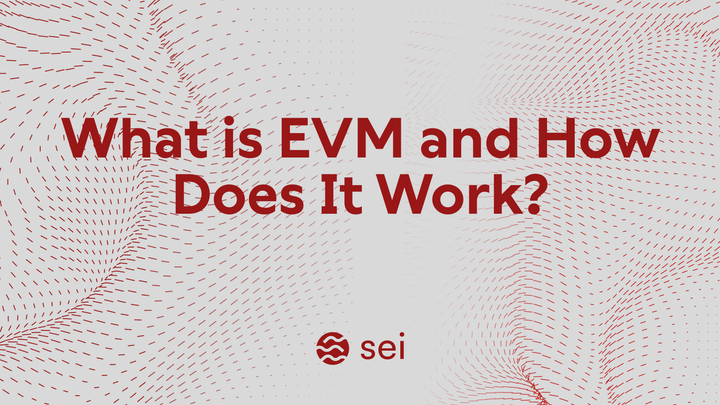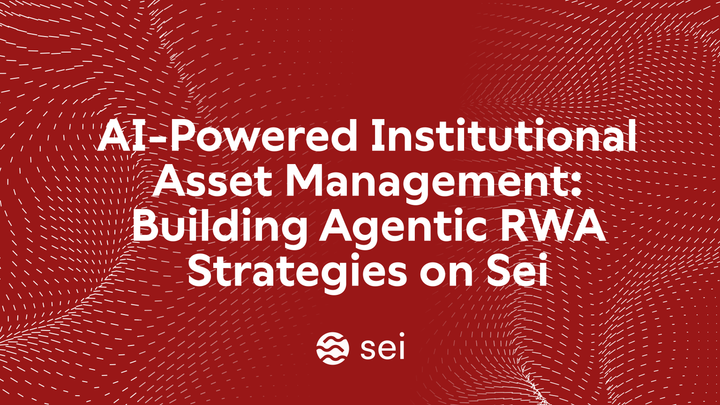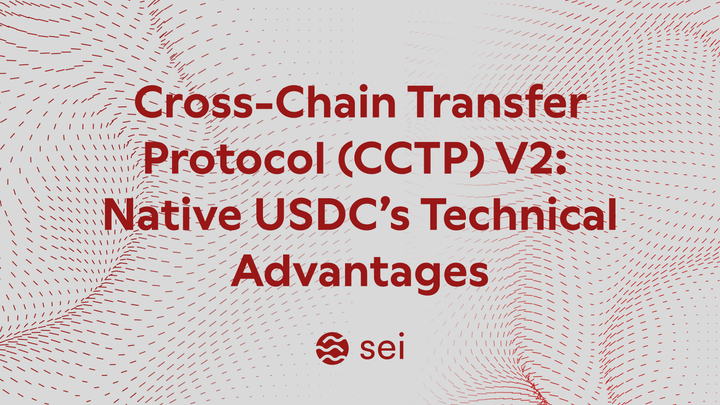Blockchain Development: How to Get Started in Web3
A beginner-friendly roadmap to start your journey in blockchain development and Web3 technology. For students and first-time developers.

Blockchain is a new way of building and running digital systems. Instead of relying on a single central authority, it operates on decentralized networks that are open, secure, and transparent.
For businesses, this means faster transactions and new ways to work without relying on middlemen. Big names like JPMorgan are already using blockchain for payments, supply chains, and customer loyalty.
The technology is moving fast, and now is the best time to start learning and experimenting. In Web3, those who start early don't just keep up, they lead. This article will give an overview of how to get started in blockchain development:
What Does Blockchain Development Mean?
Blockchain development involves building smart contracts, dApps, or protocols (on a deeper level). Some developers might focus on infrastructure or tooling while developing a framework or middleware for a blockchain.
Here's an overview of different areas blockchain developers typically work in
- Smart contracts: Programmable agreements on a blockchain. They're self-executing code that automatically enforces terms when conditions are met. Writing smart contracts in Solidity (for Ethereum) is a core skill you must learn.
- Decentralized applications (dApps): Applications with front-ends that interact with blockchains via smart contracts. These apps run on a blockchain network (often Ethereum or EVM chains) and aim for security and transparency.
- Protocol/blockchain development: When gaining more experience in the subject, developers might get to work on blockchain protocols themselves. This includes implementing consensus algorithms, network layers, or new Layer 1 designs. With this, you can build your blockchains for different use cases.
- Decentralized Finance (DeFi) and NFT development: Developers might choose to build financial applications on a blockchain, such as lending protocols or a decentralized exchange (DEX). Apart from this, there are also non-fungible tokens (NFTs) platforms, which might involve working on minting tools and marketplaces.
- Tooling and infrastructure: Developers might build wallets, explorers, and other infrastructure services in this area.
This is an overview of what blockchain developers could work on. However, this list isn't exhaustive; developers might build new blockchains, write smart contracts, or simply integrate distributed ledgers into large organizations.
Regardless of the chosen stream, being in blockchain development is highly rewarding.
Getting Started as a Blockchain Developer: A Roadmap to Enter Web3
The suggestions below show a potential path, but developers need to independently determine if or when they want to follow a new route. Developers don't need to be a know-it-all to start as a blockchain developer. They evolve with time.
Here is a step-by-step learning path for a new blockchain developer, from core concepts to advanced topics:
1. Building Foundations
First, developers need foundational knowledge of cryptography. This includes:
- Hash functions
- Symmetric and asymmetric cryptography
- Data structures
- Distributed system fundamentals
- Consensus (primarily proof-of-work vs. proof-of-stake)
There are different resources available that offer clarity about these concepts. Khan Academy videos serve as a fundamental help in understanding cryptography.
For those wanting to dig deeper, explore the offered cryptocurrency and blockchain courses from Coursera and technical deep-dive lectures from Stanford.
2. Understanding Smart Contracts
Smart contracts are self-executing programs stored on the blockchain. They run exactly as coded, without the need for intermediaries. This removes trust issues between parties because the blockchain guarantees the execution.
Key characteristics of smart contracts:
- Immutable logic: Once deployed, the code can’t be changed.
- Transparency: Anyone can review the code and transaction history.
- Automation: They can enforce rules, transfer funds, or trigger actions automatically when conditions are met.
Smart contracts enable a wide range of applications, including decentralized finance (DeFi), NFTs, supply chain tracking, gaming, and more. They are the foundation for most blockchain innovations.
3. Getting Acquainted with Ethereum and The EVM
Ethereum is the most popular blockchain for building decentralized applications (dApps). At its core is the Ethereum Virtual Machine (EVM), a global, decentralized computer that executes smart contracts exactly as written. Every Ethereum node runs the EVM, ensuring that all participants see the same results for the same inputs.
Developers write smart contracts in languages like Solidity, which are compiled into bytecode that the EVM can run. Once deployed, these contracts become immutable, meaning no one can alter their logic after launch. This trustless execution model is one of the primary reasons Ethereum has become the leader in blockchain development.
The EVM has also set the standard for blockchain compatibility. Many newer blockchains aim to be “EVM-compatible,” allowing developers to easily migrate applications and code from Ethereum without rewriting them.
4. Exploring Alternative Solutions to Ethereum
While Ethereum dominates, it has limitations, mainly high gas fees and limited transaction throughput during peak demand. These challenges have led to the development of alternative solutions to increase the scalability and performance of the network while keeping the costs reasonable.
Two main approaches have emerged:
Layer 2 solutions
Layer 2 (L2) solutions built on top of Ethereum that process transactions off-chain and then settle them back on Ethereum. This design enables them to achieve faster speeds and lower fees without compromising trust.
The main types of L2s are:
- Optimistic rollups: Bundle multiple transactions and submit them as one to Ethereum, assuming transactions are valid unless proven otherwise.
- Zero-knowledge (ZK) rollups: Use cryptographic proofs to verify transactions before settling them on Ethereum.
For developers, they offer a near-identical development experience to Ethereum. However, they're not a permanent solution for Ethereum's scalability and performance.
Jay Jog, Co-founder at Sei Labs, explains this clearly: “Layer-2 solutions have proven to be nothing more than a ‘quick fix’ instead of a permanent solution, as many hoped for. They come with their own challenges, primarily tied to centralization and interoperability.”
To find a suitable solution, several alternative EVM Layer 1s emerged.
Alternative EVM Layer 1s
Alternative EVM Layer 1 blockchains are independent blockchains that run the Ethereum Virtual Machine natively. They don’t rely on Ethereum for settlement, but maintain full compatibility with Ethereum-based code.
For example, Sei EVM is focused on parallelized transaction execution to handle high-performance applications. Sei V2 has been able to realize a throughput of 100 megagas per second. Sei Labs has also rolled out its whitepaper on Sei Giga, which will realize a throughput of 5 gigagas per second.
This means faster transactions and more predictable performance than Ethereum. For developers, it gives the benefit of flexibility, where developers can deploy the same solidity-based contracts to multiple blockchains to reach new users and markets.
5. Building dApps
Start learning development frameworks like Hardhat, Truffle, or Ganache. It's best to know the React programming language, as it helps connect smart contracts to the front-end.
Learn React: Consider this Udemy course to learn ReactJS from Basics to Advanced.
Developers can refer to Hardhat documentation and tutorials for development frameworks. Check out Alchemy University courses to familiarize yourself with Web3 development.
Blockchain Development Trends: The Latest Ones
Blockchain tech is evolving rapidly. Key current trends include:
Transitioning from Layer 2 to Layer 1 for More Scalability and Efficiency
Although zero-knowledge rollups effectively scale blockchain networks, constraints still limit them. Zk-rollups or optimistic rollups help blockchains handle more activity by doing most of the work off the main chain and only saving batched transaction data on the main chain.
While Layer 2 blockchain solutions like rollups have been a quick fix, they do not offer a permanent solution. According to a recent blog post written by Ethereum’s founder, Vitalik Buterin, these solutions are struggling to maintain interoperability. It brought attention to Layer 2 solutions’ disorganized state, which is contributing to liquidity fragmentation and complex UX.
Jay Jog feels that “from day one, Layer 1s have always been the proper solution to the EVM’s scalability problem. It is time to be open to adopting more accurate performance metrics and diverting attention to improving network performance.”
With this vision, Jay and the Sei Labs team strive to achieve the highest scalability and efficiency potential with Sei Network, a high performance layer 1 blockchain.
Modular Blockchains Emerge
Beyond monolithic chains, modular blockchain architectures are emerging. These use separate layers for consensus, data availability, and execution.
For example, projects like Celestia (data availability layer) and EigenLayer (restaking) aim to make blockchains more flexible. Such designs can let specialized Layer 2s run independently, which opens possibilities for customizing performance and trust models.
Asset Tokenization In The Real World
Financial institutions and governments are actively tokenizing traditional assets.
As the World Economic Forum reports, tokenization of securities, real estate, and other assets is happening at an institutional level. Building on blockchains can now mean programming security tokens, stablecoins, or tokenized ETFs.
In April 2025, a firm filed for the first-ever U.S. ETF backed by staked SEI tokens, signaling growing institutional crypto interest. Developers should note this trend. The demand is rising for platforms that support compliant asset tokens and digital representations of real-world goods.
AI-Blockchain Convergence
Artificial intelligence is increasingly integrated with blockchain. For instance, blockchain can provide verifiable data feeds and identity layers for AI systems, while AI can optimize blockchain analytics and automation.
A recent tech industry analysis notes that blockchain is improving digital identity and security, while AI adds dynamic, personalized capabilities. We see the rise of projects combining AI and Web3 (e.g decentralized AI networks, onchain machine learning).
Developers should monitor protocols at this intersection (like SingularityNET or AI-based oracles) and expect more tooling for onchain AI/ML workflows.
Why Focus on EVM Development First
Ethereum remains the most extensive and active ecosystem in blockchain development. Its broad community shares knowledge and tools to support fellow EVM developers. Electric Capital’s Developer Report states, “Ethereum is the #1 ecosystem for total developer activity on every continent.”
There are different chains, like Sei, BNB Chain, Polygon, and others, that are EVM-compatible. These chains let developers use one skillset across various networks, giving them a competitive advantage in their careers. Research shows that nearly 9 out of 10 multi-chain blockchain developers work on an EVM-compatible chain.
What does “EVM compatibility” mean? It means you can write Solidity contracts and deploy them to dozens of networks with minimal changes.
Developer tooling is the richest EVM space, with large libraries, IDEs, documentation, and enterprise adoption. It often uses Ethereum standards, such as ERC-20 tokens. Learning Solidity and EVM opens doors to a broad range of jobs and projects for those just starting in blockchain development.
Build on Sei, an EVM-Compatible, Scalable Blockchain
Sei’s architecture combines the Ethereum ecosystem’s familiarity with scalability optimizations. Below are some key advantages to opting for the Sei network to build your blockchain project.
- Parallelized execution and performance: Unlike standard EVM chains that process transactions one by one, Sei executes many transactions simultaneously. Its Giga upgrade will increase performance to 5 “gigagas” per second, roughly 50x the computational power of existing EVM chains. The chain can manage more transactions per second than typical Layer 1 or Layer 2 networks.
- EVM compatibility: Sei supports Solidity smart contracts and Ethereum tooling natively. Developers can deploy Solidity contracts on Sei just as on Ethereum, but with much higher speed. It decreases the steep learning curve of developing on a new blockchain.
- Developer-focused ecosystem: Extensive documentation and developer tools with Sei’s GitHub and dev portal are available. Significant ecosystem growth funds exist to support builders, creators, and contributors.
- Institutional Recognition: Sei Labs, the entity who developed the Sei Network, is backed by investors like Coinbase Ventures, Multicoin, and Jump Crypto. Institutional appetite for Sei is clear with the filing of a Staked Sei ETF by Canary Capital and Staked ETPs in Europe.
Sei lets developers use their EVM knowledge base immediately on a state-of-the-art chain with significant technical advantages.
Get Into Blockchain Development: It’s Worth It
With the right learning roadmap and curiosity for the latest trends, aspiring developers can become proficient blockchain developers with consistent practice. Taking learning beyond theories and putting it into practice is essential. When challenges arise, there's a whole community to fall back on for suggestions and advice.
Developers will get the support they need as long as they're devoted to following the roadmap. Considering EVM development is advisable since it opens up many opportunities today. Starting now means being a part of an exciting ecosystem and community.
Subscribe to the Sei Network blog for additional educational articles and the latest news from the ecosystem
Frequently Asked Questions on Blockchain Development
1. What Skills Are Required for Blockchain Development?
To excel in blockchain development, one should possess the following skills:
- Understanding of blockchain architecture: Learn how blockchain systems operate, including distributed ledgers, consensus mechanisms, and network protocols.
- Cryptography: Explore cryptographic principles like hashing and digital signatures.
- Smart contracts: Hone the ability to write and deploy smart contracts using languages like Solidity.
- Data structures: Develop familiarity with data structures such as Merkle trees and linked lists, which are fundamental to blockchain.
- Web development: Learn front-end and back-end development to build user interfaces and integrate with blockchain networks.
- Programming languages: Not all projects require all of the following programming languages. However, it's useful if you have experience with languages commonly used in blockchain, such as Solidity, Java, Python, and JavaScript.
- Security: Become aware of common security vulnerabilities in smart contracts and how to mitigate them.
2. How Much Does a Blockchain Developer Earn?
Blockchain developers are among the top earners in the tech industry, with salaries varying by region and experience. For example:
- India: The average annual salary ranges from ₹6.5 lakhs to ₹ 8 lakhs ($7,416 to $9,128) with experienced developers earning up to ₹34,230 per annum.
- United States: Average salaries range between $90,000 and $120,000, with senior developers earning over $130,000 annually.
- United Kingdom: Blockchain developers earn an average of £61,885 ($83,819) per year.



